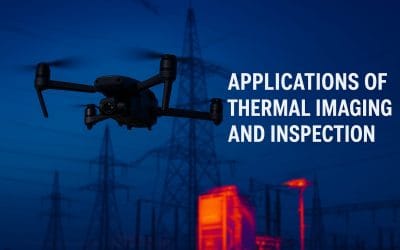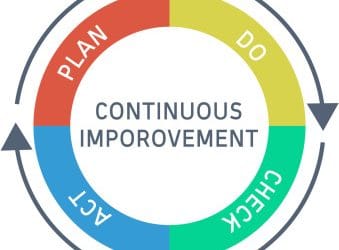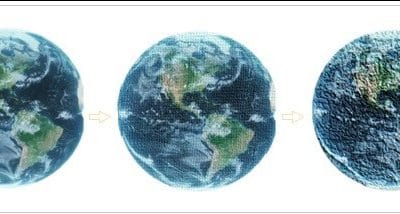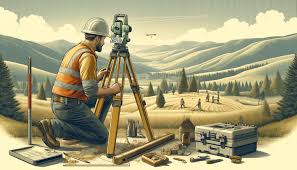As technology advances, the ability to create detailed and accurate 3D models of the environment is becoming increasingly important. One of the most powerful tools for achieving this is LiDAR (Light Detection and Ranging), a remote sensing technology that is transforming industries ranging from urban planning to environmental monitoring. In this blog post, we’ll explore what LiDAR is, how it works, and the significance of point cloud data processing in creating high-resolution 3D models.
What is LiDAR?
LiDAR is a remote sensing technology that uses laser light to measure distances to the Earth’s surface, providing highly accurate and precise topographical data. The system emits laser pulses, which bounce off objects and return to the sensor. By calculating the time it takes for the light to return, the system can determine the distance between the sensor and the object. This process is repeated millions of times per second to collect detailed 3D data.
LiDAR systems can be airborne, mounted on drones, aircraft, or satellites, or they can be terrestrial, mounted on vehicles or stationary platforms. Airborne LiDAR is often used for large-scale topographic mapping, while terrestrial LiDAR is ideal for capturing detailed data in smaller areas like urban spaces or forests.
How LiDAR Works
A typical LiDAR system consists of several key components:
- Laser Scanner: Emits laser pulses towards the target.
- Receiver: Detects the reflected laser pulses.
- GPS and IMU: Provides the position and orientation of the LiDAR sensor, ensuring that data is geo-referenced to real-world coordinates.
- Processing Unit: Records and processes the returned laser data to generate point cloud data.
The laser pulses that return to the sensor create a “point” in space. When combined, these points form a point cloud — a dense collection of data points representing the physical world. This point cloud is then processed to create 3D models or maps of the scanned area.
Point Cloud Data Processing: The Heart of LiDAR Analysis
Once LiDAR data is captured, it is stored as a point cloud — a collection of millions or even billions of 3D coordinates. While LiDAR technology provides a wealth of data, it is the processing of point cloud data that unlocks its full potential.
1. Point Cloud Classification
Point cloud classification is one of the first steps in processing. In this phase, different types of points are identified and categorized based on their characteristics. For example:
- Ground points: Represent the Earth’s surface, used for terrain modeling.
- Vegetation points: Correspond to trees and shrubs, useful for forestry analysis.
- Building points: Correspond to structures like buildings and bridges.
- Water bodies: Points that represent lakes, rivers, or wetlands.
Classifying points helps separate different features of the landscape, making it easier to analyze specific elements like vegetation, buildings, or terrain.
2. Noise Removal
LiDAR data is often noisy due to various factors, such as sensor errors, interference, or atmospheric conditions. Noise can result in outlier points that do not represent actual features of the environment. The next step is to clean the point cloud by removing these erroneous points, ensuring the accuracy of the data.
3. Point Cloud Registration
In cases where multiple LiDAR scans are used to cover a large area, it is important to align or register the different point clouds to create a seamless, unified model. This is often done using a process called registration or matching. Advanced algorithms align overlapping scans by identifying common features and adjusting the orientation of the point clouds accordingly.
4. Surface Reconstruction
After classification and cleaning, the next step is to reconstruct surfaces from the point cloud. This can be done by generating a digital surface model (DSM) or digital elevation model (DEM). A DSM represents the Earth’s surface, including buildings and vegetation, while a DEM represents the bare earth surface, without structures or vegetation.
Surface reconstruction allows for the creation of highly detailed 3D models, useful in applications like terrain analysis, urban planning, and flood modeling.
5. Feature Extraction and 3D Modeling
One of the most powerful uses of point cloud data is extracting features and creating 3D models. Features such as buildings, roads, trees, and powerlines can be automatically detected from the point cloud. Algorithms can analyze the point cloud to identify vertical structures, curves, and other features, then reconstruct them as 3D models.
These 3D models can then be used for various applications:
- Urban modeling: Creating detailed models of cities for planning, development, and simulation.
- Environmental monitoring: Monitoring forest health, vegetation density, or coastal changes.
- Civil engineering: Designing and analyzing infrastructure projects such as roads, bridges, and buildings.
6. Visualization
Once the point cloud is processed and features are extracted, the data is ready for visualization. High-quality 3D visualizations are crucial for interpreting the model and sharing findings with stakeholders. This can be done through platforms like GIS software, which allows users to interact with the model in a virtual environment. Visualization can help in:
- Virtual site inspections.
- Planning and simulation.
- Communicating project proposals.
Applications of LiDAR and Point Cloud Data Processing
LiDAR and point cloud data processing have numerous real-world applications across industries:
1. Urban Planning and Architecture
LiDAR data provides highly accurate 3D models of cities, allowing urban planners and architects to simulate changes, plan infrastructure projects, and design buildings. LiDAR scans can be used to create models of existing structures, assess building heights, and ensure zoning regulations are met.
2. Forestry and Environmental Studies
Forestry professionals use LiDAR to assess forest structure, estimate tree height, biomass, and canopy cover, and monitor changes in vegetation over time. Point cloud data can help track deforestation, measure forest density, and understand ecosystem health.
3. Civil Engineering and Construction
LiDAR is invaluable in civil engineering and construction, where precision is critical. It’s used to create accurate terrain models, monitor construction progress, and plan infrastructure projects. LiDAR can also be used to inspect and model complex infrastructure like bridges, dams, and tunnels.
4. Archaeology
LiDAR has revolutionized archaeology by allowing researchers to discover and map ancient structures and landscapes that may be hidden beneath dense vegetation or soil. This non-invasive technology has been used to map ancient cities, tombs, and road networks.
5. Autonomous Vehicles
LiDAR plays a key role in the development of autonomous vehicles, providing real-time 3D data of the surrounding environment. This allows vehicles to detect and navigate obstacles, recognize road features, and ensure safe driving.
6. Flood Risk Management and Coastal Monitoring
LiDAR’s high-resolution data helps model flood risk areas, assess coastal erosion, and create detailed floodplain maps. By combining LiDAR data with hydrological models, engineers can predict and mitigate flood risks.
Conclusion
LiDAR and point cloud data processing are transforming industries by providing high-precision 3D models and enabling detailed analysis of the physical world. From urban planning to environmental monitoring and autonomous vehicles, the potential applications are vast and growing. As LiDAR technology advances and point cloud data processing becomes more sophisticated, the opportunities for leveraging this technology will only increase.
By harnessing the power of LiDAR and point cloud data, professionals in a wide range of fields can make better-informed decisions, create more sustainable solutions, and visualize the world in ways that were previously unimaginable.


































































































